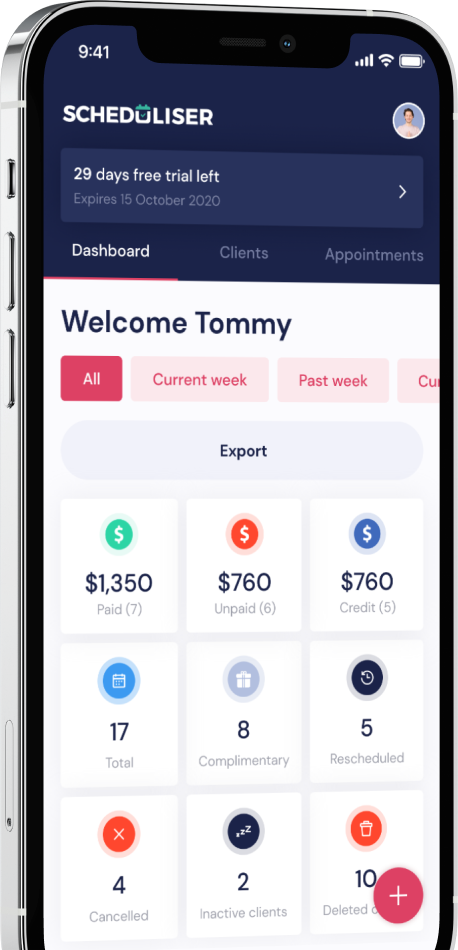Five proven ways to reduce no-show clients in my personal training business

Providing client service and working for yourself can be extremely satisfying, but one of the biggest complaints is the number of no-shows that can significantly impact your business and revenue.
What is a no-show
A no-show is simply someone who does not show up for their scheduled appointment. In some industries, it’s easier to handle this free time because you might have the option to accept walk-in clients. Of course, this is far more difficult in the personal training world because it takes time to get new clients. Unless you are in the lucky position of having a waitlist for your services, you won’t be able to fill your sudden free time with an alternate client.
Why are there so many personal training no-shows?
No doubt life can get in the way of good intentions, but certain industries are more prone to no-shows and personal training is one of them. But why?
Regardless of how much we enjoy looking and feeling fit and healthy, a tough workout is not always the thing we look forward to in our week, especially if it is cold and or raining.
Weekends and Monday mornings are also tougher days of the week for your clients so these might also be your worst days for attendance. Let’s face facts, people have busy lives and they are much more likely to have social engagements over the weekend that affect their ability to wake early, especially on Monday morning. So, it’s important to provide your client with reasons to show up so they recognise the value for money of your sessions.
Reducing no-shows
There are many ways to reduce your no-show rate and encourage your clients to attend the session they have pre-booked and we are going to focus on the top five.
1. Create a no-show policy
There are plenty of templates available for creating a cancellation policy and you must ensure it states the consequences of last-minute changes. You may choose to allow rescheduling appointments with no cost implications as long as you are notified within a certain time. Or you may charge a cancellation fee regardless of when the cancellation is made. Importantly, when you first meet with a new client you must inform them of your policy for cancellations, and you need to ensure they have signed off in writing on your policy so you can charge them for late cancellations if they occur.
Most providers have a copy of their policy on their website but make sure it is accessible because you don’t want the hassle of having to chase your clients for money. Also, if they never show up again, it is going to be difficult to ever recover your fee.
2. Provide appointment reminders
It has been proven that SMS text reminders can decrease no-shows by almost 70%, so you definitely want to incorporate these into your business. While it is fine to send reminders manually, automated programs like Scheduliser can provide SMS text or email reminders without costing anything extra. You determine how much notice your clients will require and the text or email will be automatically sent.
Just make sure you allow enough time outside of your cancellation policy to provide your client with the opportunity to change without being penalised. Some companies offer reminders too late for their clients to avoid charges but we don’t recommend this option as it will not produce goodwill among your client base.
3. Ask for prepayment
There are plenty of benefits with prepayments, including the most important of increasing cash flow, but there are also downsides to the prepayment plan if you are not good at budgeting. Spending prepayments early means you may run out of money, but there is often a chance that although your client will pay for multiple training sessions, they may never attend all they have paid for.
Gyms have been operating successfully under this system for years. Their clients pay for memberships they don’t use and their gym keeps making money for providing little to no service. Of course, this model didn’t continue during COVID lockdowns and suddenly many gyms lost their normally healthy passive revenue. It’s hard to say if they’ll continue operating successfully using this outdated model, but for you to be successful running your own personal training businesses, you need clients who value your services, attend your sessions and provide recommendations to their friends and colleagues.
4. Choose your times wisely
As you get to know your clients, you will understand whether they have the propensity to be a no-show at certain times of the week. Clients who overindulge during the weekend may be far less likely to show up for a Monday morning training session, so why book it for them in the first place? Give your Monday mornings to clients who are going to show up, even if they aren’t as profitable, and that way you can keep your schedule full and your revenue steady.
5. Keep your clients motivated
A personal training session is meant to make your clients work hard but if they aren’t enjoying themselves and or seeing results, you might need to rethink your approach. If it’s providing some sense of enjoyment or fulfillment, they are much less likely to cancel at the last minute, which will be beneficial to both you and your client.
For more information on managing clients or growing your personal training business see the Scheduliser app.
Scheduliser helps you manage your PT clients in an easy-to-use platform with unlimited client capacity, auto appointment reminders, and cancelation notices, and in-built business insights to help you increase your return, grow your business and save valuable time and money.









